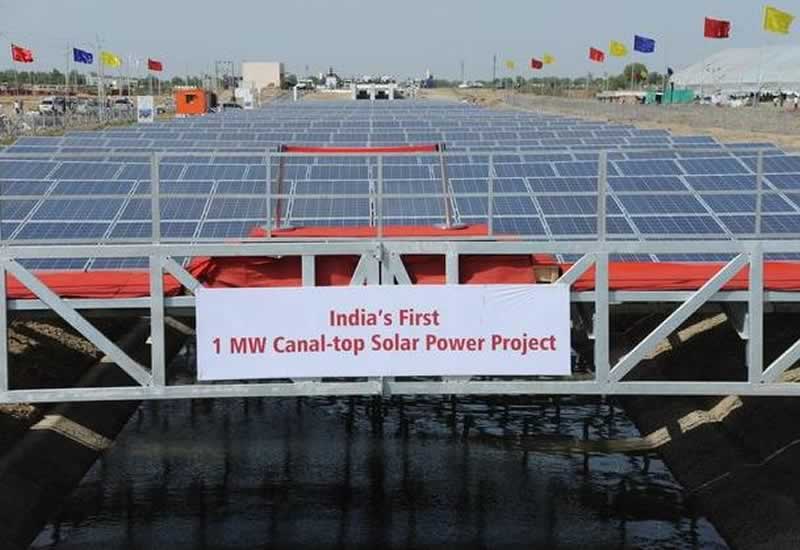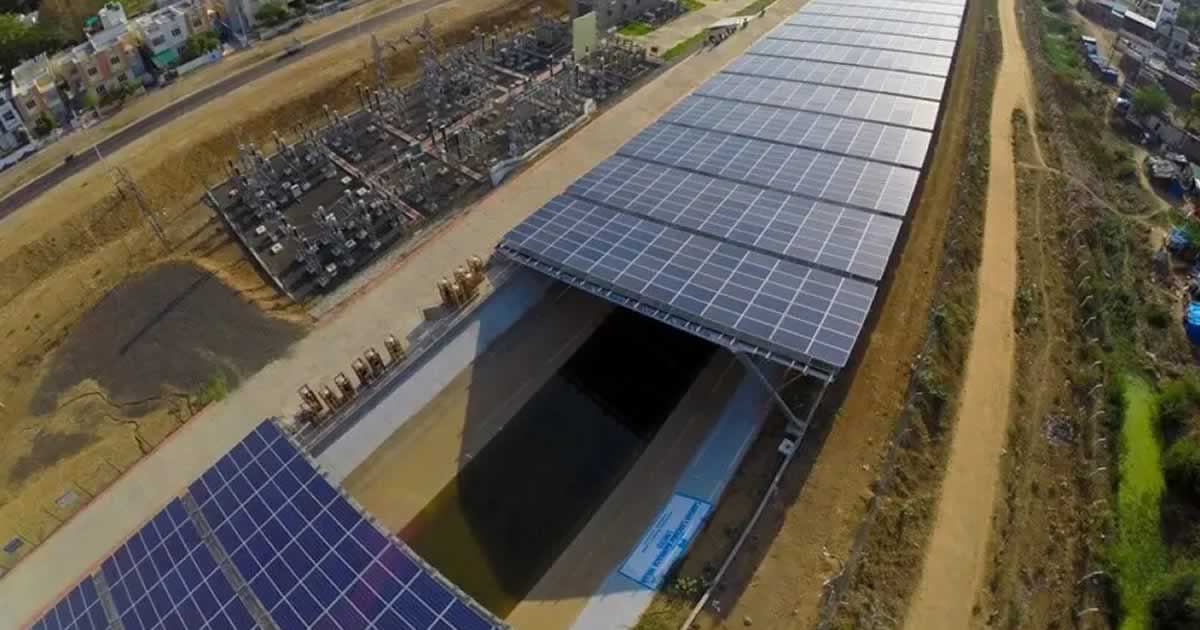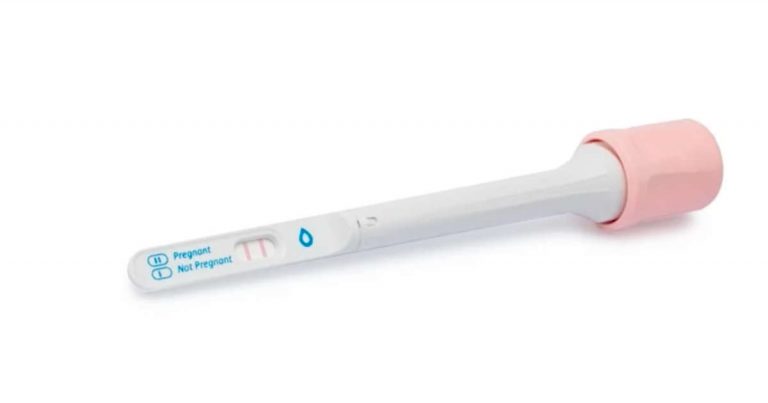The Canal Solar Power Project in Gujarat, India, solves two problems. On the one hand, it generates energy with solar panels. In addition, it protects the water from its evaporation.
Apart from the importance of installing solar panels on an area of about 532 kilometers long — the distance that the Narmada canals travel through the length and breadth of the state of Gujarat, in India. Solar panels act as a protector for the waters that run through these channels, preventing their evaporation in the face of high temperatures.
A country as large as India generated 72% of its electricity in 2018/19 using mainly coal-fired power plants. And as we all know, it is not a small country. It is the second in population, with more than 1.38 billion inhabitants in 2020, according to UN estimates. So any action that India takes towards a more sustainable economy should be welcomed around the world for its impact on the planet, more important than that of many countries as a whole.
To begin with, that the country has a ministry dedicated exclusively to renewable energy.
Canal Solar Power Project, the name given to this ambitious project of building solar channels or placing solar panels on top of water channels, was an idea announced in a distant 2012.

The purpose was to take advantage of the length of the Narmada canals, some 532 kilometers long, to install solar panels and thus obtain clean electricity. For this, the services of SunEdison India, a subsidiary of the American SunEdison, a company specializing in projects related to solar energy and wind energy, were hired.
The one-megawatt pilot project was inaugurated in April 2012. This first phase, at the cost of US $2.5 million, was on the Narmada branch between Chandrasan and Kadi. In addition to generating solar energy, it protected the canal’s water, preventing the evaporation of up to nine million liters of water per year.
The success of this first phase led to the construction of a solar power plant in Vadodara district in Gujarat state in 2015. At the cost of US $18.3 million, the project could draw electricity from different points of the solar channels. According to those responsible, the energy generated can be used in agriculture in the area, fed into the electricity grid or sold to distribution companies.
The main reason for installing solar panels on top of water channels is to save on the cost of buying or leasing kilometers of land that can be used for other uses, such as agriculture, housing or other infrastructure.
In the state of Gujarat, the areas through which the Narmada River passes are basically agricultural. So it needs that water for irrigation and for its inhabitants. High temperatures cause a large part of those liters of water to evaporate, and also water became toxic due to the algae that grow with the help of direct sunlight.
Thus, solar panels generate clean energy while preventing the evaporation of water. And, incidentally, they prevent the algae that pollute the water from growing. And if all this seems little, with part of the water, the solar panels can be cleaned and cooled, increasing their efficiency between 2.5 and 5%.
The state of Gujarat, in northwestern India, has more than 80,000 kilometers of water channels. According to the Gujarat State Electricity Corporation, if only 30% of these channels were covered with solar panels, 18,000 megawatts of power would be generated. The equivalent, in the occupied area, would be that of a 364 square kilometer solar farm.
For now, others have been added to the project started in 2012, such as the one announced in 2019, which was to reach a power of 100 megawatts occupying 40 kilometers of the main channel that constitutes the Narmada River.
But the project goes beyond Gujarat. Several other states in India have joined various solar channel installations. Like Punjab, Karnataka, and Kerala. To make this possible, the Ministry of New and Renewable Energy offered in 2016 grants for the creation of these solar installations, many of them already completed and in operation.






Leave a Comment